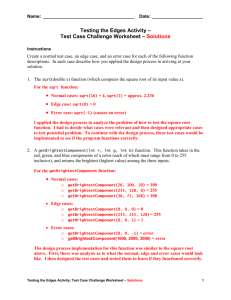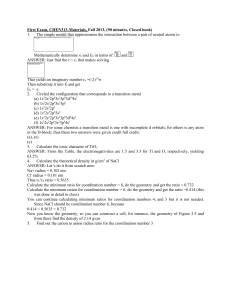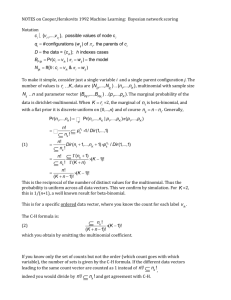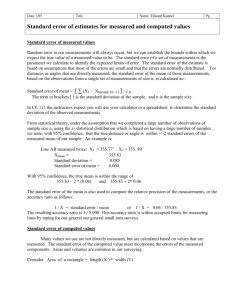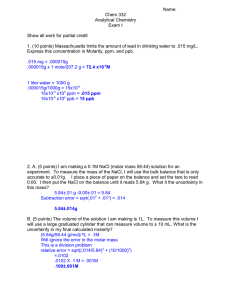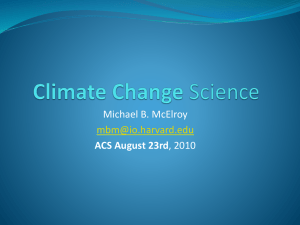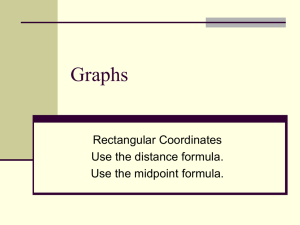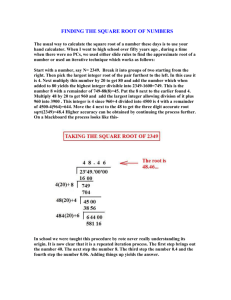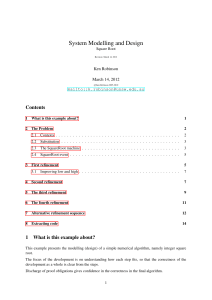HW 3 solutions Note: question 2 is not very well posed. I had
advertisement
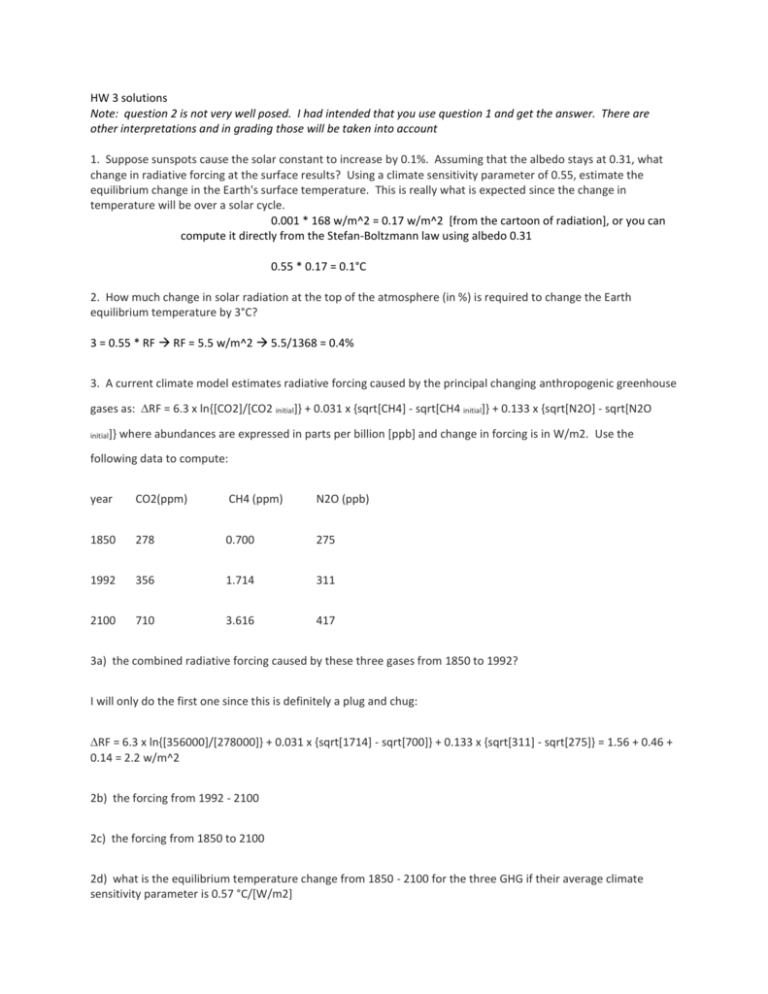
HW 3 solutions
Note: question 2 is not very well posed. I had intended that you use question 1 and get the answer. There are
other interpretations and in grading those will be taken into account
1. Suppose sunspots cause the solar constant to increase by 0.1%. Assuming that the albedo stays at 0.31, what
change in radiative forcing at the surface results? Using a climate sensitivity parameter of 0.55, estimate the
equilibrium change in the Earth's surface temperature. This is really what is expected since the change in
temperature will be over a solar cycle.
0.001 * 168 w/m^2 = 0.17 w/m^2 [from the cartoon of radiation], or you can
compute it directly from the Stefan-Boltzmann law using albedo 0.31
0.55 * 0.17 = 0.1°C
2. How much change in solar radiation at the top of the atmosphere (in %) is required to change the Earth
equilibrium temperature by 3°C?
3 = 0.55 * RF RF = 5.5 w/m^2 5.5/1368 = 0.4%
3. A current climate model estimates radiative forcing caused by the principal changing anthropogenic greenhouse
gases as: RF = 6.3 x ln{[CO2]/[CO2 initial]} + 0.031 x {sqrt[CH4] - sqrt[CH4 initial]} + 0.133 x {sqrt[N2O] - sqrt[N2O
initial]}
where abundances are expressed in parts per billion [ppb] and change in forcing is in W/m2. Use the
following data to compute:
year
CO2(ppm)
CH4 (ppm)
N2O (ppb)
1850
278
0.700
275
1992
356
1.714
311
2100
710
3.616
417
3a) the combined radiative forcing caused by these three gases from 1850 to 1992?
I will only do the first one since this is definitely a plug and chug:
RF = 6.3 x ln{[356000]/[278000]} + 0.031 x {sqrt[1714] - sqrt[700]} + 0.133 x {sqrt[311] - sqrt[275]} = 1.56 + 0.46 +
0.14 = 2.2 w/m^2
2b) the forcing from 1992 - 2100
2c) the forcing from 1850 to 2100
2d) what is the equilibrium temperature change from 1850 - 2100 for the three GHG if their average climate
sensitivity parameter is 0.57 °C/[W/m2]
compute RF as above and multiply by 0.57 = (5.9 + 1.04 + 0.51) * 0.57 = 4.3 w/m^2

